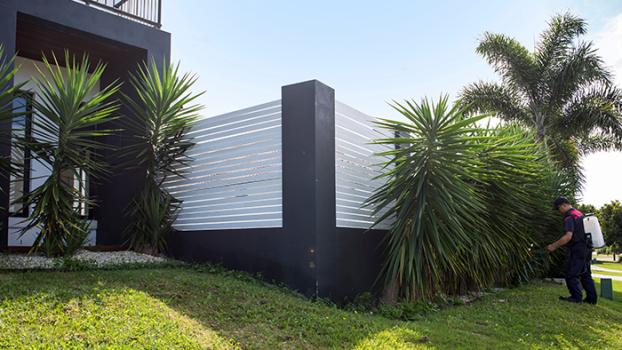
Pest controller
Pest and weed controllers prevent and eradicate infestations of weeds, insects, rodents and other organisms that pose a threat to the safety and livelihood of people, property or crops and livestock. They employ a range of pest and weed management techniques in a range of areas, including domestic, commercial and industrial spaces, public places such as parks and roadsides, and on agricultural land. They inspect an area to find where pests are concentrated and using that information, decide on the best solution for the problem, whether it involves spraying pesticide, laying traps for animals and insects, or using a range of other methods. Some may even spray crops using planes with aerial pesticide applicators.
Working conditions
Pest and weed controllers work both inside and outside houses, commercial and industrial buildings, in public spaces such as roadsides and parks, and in large agricultural spaces such as farms and crops. They may be required to work in dirty or awkward spaces. They may travel both short or long distances to get to a particular job. They usually work regular hours. As they handle toxic materials they need to wear protective clothing and observe strict safety procedures. Agricultural pest controllers may fly planes in order to apply pesticides to crops.Pest and weed controllers work right across the state, from suburban houses and back yards to expansive crop fields in our regional areas.
Tools and technologies
Pest and weed controllers may use liquid chemical applicators, traps and firearms, as well as baits and pesticides. They often drive vans or utility vehicles, and some may even fly planes. They often need to wear protective clothing such as full-length overalls, gloves, masks, wet weather gear, and covered shoes.
Education and training
To become a pest controller, you usually need to gain a qualification in pest management.
The Certificate III in Urban Pest Management and Certificate III in Pest Management are offered at TAFE colleges and other registered training organisations throughout Western Australia. Browse courses through Jobs and Skills WA and search on the My Skills website to find a registered provider near you.
You can also undertake a pest management technician (level 3) traineeship. The traineeship usually takes 12 months to complete.

Free support and assistance
Your local jobs and Skills Centre can provide free information, support and assistance to help you decide on the best training options to meet your goals.
Disclaimer
The information presented on the occupation profiles within this website is offered as a guide only.


